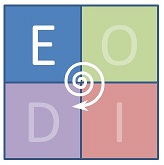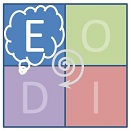
 Imagine that you are considering turning your passion for digital photography into a part-time business, or that you have several ideas you think will make your monthly management meetings more effective. How do you go about progressing these aspirations and ideas? You could go down the ‘analyze-plan-implement’ path and have one major shot at making them successful. Or you could treat them as an experiment towards your objective of generating a second source of income, in the first instance, or of making your management team more effective, in the second.
Imagine that you are considering turning your passion for digital photography into a part-time business, or that you have several ideas you think will make your monthly management meetings more effective. How do you go about progressing these aspirations and ideas? You could go down the ‘analyze-plan-implement’ path and have one major shot at making them successful. Or you could treat them as an experiment towards your objective of generating a second source of income, in the first instance, or of making your management team more effective, in the second.
Framing these activities as experiments, rather than as firm plans, has several important practical and psychological benefits:
- The fear of failure is removed, or at least diminished. Experiments are not expected to always be successful. If they fail, there is little or no risk to our reputation and credibility. As discussed by John Caddell at 99U, in some instances it may even be appropriate to undertake an experiment in which failure is expected.
- As a consequence of the reduced fear of failure, you are more likely to be more creative and innovative. You are more likely to be open to trying some things that may fail because they are new or unusual, but have the potential to provide a high return. Peter Sims over at the HBR Network Blog describes fear of failure as “the No. 1 enemy of creativity”.
- There is an increased focus on evaluation and learning rather than on achieving a predetermined implementation plan or being successful (at all costs). By framing the activity as an experiment, we acknowledge that we cannot fully predict the outcome and all the associated implications. As a result we undertake the task with an inquiry-oriented and learning mindset.
- The learning mindset stimulates a focus on the key assumptions we are making and/or on the most important design decisions. We ask ourselves: what areas of uncertainty are going have the most impact on the success of this idea or proposal? We then ensure that the experiment and the resultant observations assess and evaluate those areas of uncertainty.
- We are likely to take a more objective perspective of the outcomes. Because we are not protecting our reputation and because we have more than one shot at success, we are less likely to delude ourselves, and misreport to others, that the activity has been successful. This is a particularly important benefit in those organizations where there is strong pressure to report only good news and positive outcomes and where there is a blame culture.
- Experiments can usually be achieved faster and with less resources than a complete implementation. Experiments do not have to use ‘polished’ products or services, nor do they need to incorporate features unrelated to the assumptions or design decisions being tested.
- Design modifications are expected, not resisted. Because experiments are designed to test and evaluate uncertainties, it is expected that the design will be changed as a result of the learning generated. Change will be expected, if not encouraged, and the designers will more open to the perspectives and suggestions of others. The discussion and debates will be about what to change, not whether to change. Further, if the experiment included comprehensive data capture and interpretation, the discussion and debates will be well informed.



Follow Us!